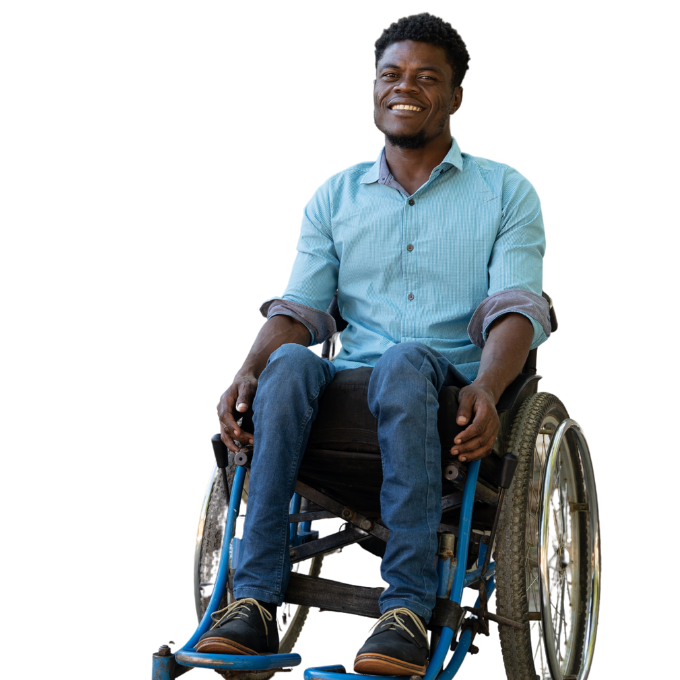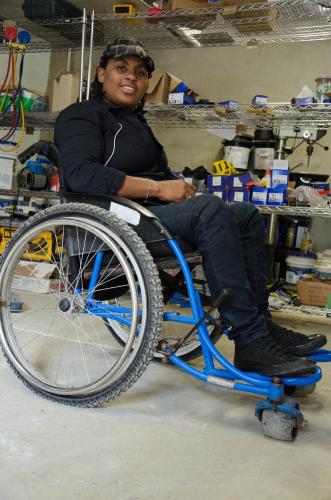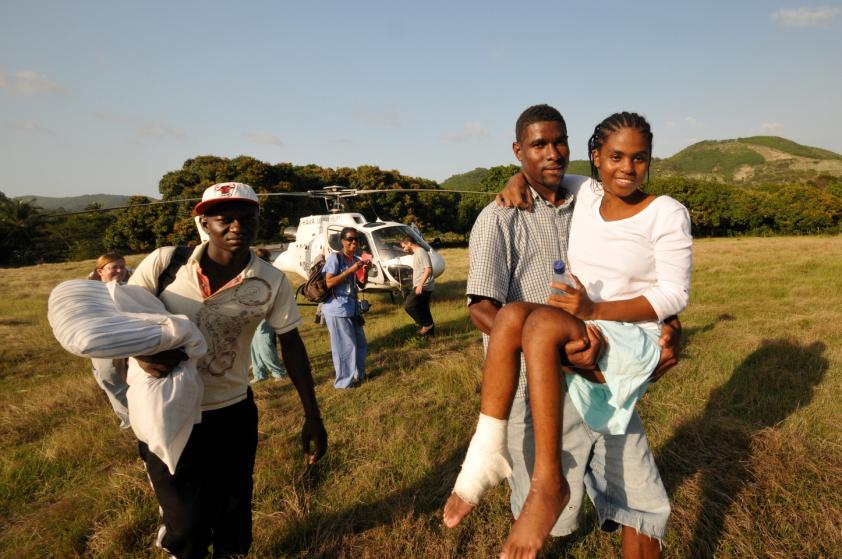“My favorite thing about my job is helping people realize their autonomy—just like I have.”
Your donation will help Maxsony provide critical support for patients with spinal cord injuries.


Fabian today, working for Build Health International on construction in Fond des Blancs.
“If you don’t have family to take you, we have to move you outside to the street,” the U.N. interpreter announced to all of the injured seeking shelter under the blue MINUSTAH tent. Fabian Jean, known to most as Barbienne, felt a sense of panic. Just two days before, on January 12th, 2010, she was walking down the road alone when the ground suddenly began to shake. In an instant, the Port-au-Prince neighborhood where she attended “Retho,” one of the last years of high school, began collapsing around her. The wall of a house smashed into her, paralyzing her from the waist down.
The interpreter left and Barbienne found herself sitting on the street outside the U.N. tent. Without the use of her legs, she had no way to find food, shelter, or her family—who she hadn’t heard from since the earthquake. Fortunately, a friend heard about her situation and came to find her.

Fabian arrives in Fond des Blancs in 2010
“Together, my friend and I traveled to the public hospital in St. Marc, north of Port-au-Prince, to seek medical care. We soon ended up back in Port-au-Prince because an organization called Medishare agreed to care for us,” Barbienne recounts. “I stayed there for three months before going to St. Boniface. They flew me to Fond des Blancs in a helicopter.”
Barbienne was housed in the women’s ward when she arrived at our doors. HEI/SBH had no previous experience treating spinal cord injury patients, but the staff recognized the monumental need for someone to step up to the challenge. The earthquake had left thousands of people paralyzed without access to care because only a few health centers would care for handicapped patients. Even fewer would offer rehabilitation.
Since then, Barbienne and a number of other spinal cord injury patients have fought to recover and become self-sufficient, with help from our staff. Barbienne spent a year rehabilitating at SBH before moving back to Port-au-Prince to study information management. However, life there was extremely difficult. “If you are handicapped in Haiti, your life is finished,” she laments. “My family—my father, uncle, and cousins—won’t even talk to me, much less support me. People look at you in a different way.”
If you are reading this, I ask that you act on what I am telling you. Your actions give us life.
Fabian Jean
It is nearly January 12th, 2015, five years since the ground shook and the wall fell on Barbienne, and she continues to face seemingly insurmountable challenges. In spite of this, she has made extraordinary progress. She now has a full-time job in information management, hired by Build Health International to manage the equipment inventory on the construction site of the HEI/SBH’s Maternal and Neonatal Care Center. Her determined attitude and infectious laughter, which can often be heard drifting up from the construction site, hide the trials she faces every minute of the day.
“It isn’t hard talking about the earthquake or my life. I can do that. Having to sit in this chair every day for the rest of my life is what is hard,” she says, then pausing to interject perspective, “but I really don’t have the right to be alive. I don’t have the right to have a job or eat food every day.” She leaves unspoken the people who she believes are deserving: those who died on January 12th, 2010, and during the months after. “But, St. Boniface gave me a new life. It is the reason I still exist.”
“Write this for me in the article,” she requests at the end, her sparkling smile replaced with a face of determination. “If you are reading this, I ask that you act on what I am telling you. Your actions give us life.”
Your donation will help Maxsony provide critical support for patients with spinal cord injuries.
